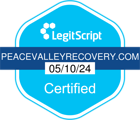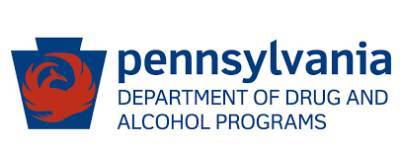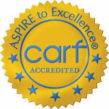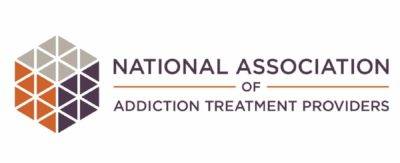How to Help an Addict Without Enabling
![]() | 4.9 Google Reviews
| 4.9 Google Reviews
![]() | 4.9 Google Reviews
| 4.9 Google Reviews
Peace Valley Recovery is located in Bucks County, Pennsylvania. Our mission is to provide patient-centered care that focuses on healing and recovery from addiction. This blog provides information, news, and uplifting content to help people in their recovery journey.
Addiction is tough. It’s painful to watch your loved one struggle with drug addiction while feeling like nothing you do makes a difference. Families want to know what they can do to help their loved ones, but few understand how to help an addict without enabling them. There’s a fine line between supporting their attempts to stop and keeping them sick.
The longer you enable your loved one, the longer it delays their recovery. If you want to know effective ways to help an addict without enabling them, we can help. Here at Peace Valley Recovery, we know and understand the challenges that drug addiction causes for both you, your loved one, and your whole family.
You must learn to recognize where the line between helping and enabling lies. The more you know about the differences between the two, the better your chances of being helpful. This list of healthy, effective ways to support your loved one on their path to recovery is a great place to start.
What Is Enabling?
Enabling happens when friends or family members unintentionally support drug abuse through their behaviors or thoughts. For example, they may:
- Give the person money when they’re short of rent despite knowing it will go to buying drugs
- Ignore unusual behaviors or actions in hopes they’ll stop naturally
- Not report dangerous or harmful acts, such as stealing from family members or friends because of the potential implications
These behaviors shield the user from experiencing the full consequences of their drug abuse. Well-intentioned actions are twisted into a “free pass” to continue their substance abuse.

This distorted view can delay or even prevent seeking treatment.
The good news is that there are several ways to encourage your loved one to stop using and get the professional help they need.
The Six Family Roles in Addiction
Active addiction not only affects the person using drugs or alcohol, but it also affects their entire family. Individuals who abuse drugs and alcohol tend to be erratic and unpredictable, leaving their confused family members to pick up the pieces. Addiction pushes family members to their breaking points and forces each person to conform in one way or another.
You may have heard of the six dysfunctional family roles in addiction before. As family members adapt to the unpredictable nature of their loved one’s addiction, each individual copes in their own way. These coping skills usually fit into one of six different categories or “roles” within the family. Each role enables the individual with the problem in some way, either directly or indirectly.

Not all families have one person who fills each role. Sometimes one member fills multiple roles and other times some roles are left unfilled. Recognizing these general descriptions and behavior patterns is one part of how to help an addict without enabling.
The Addict
The addict is the individual who abuses substances and becomes the focal point of the family. Most of the family’s attention is directed toward the addict whether they realize it or not. The addict takes time, energy, and money from their families. Family members enable the addict’s behavior by covering up for mistakes or behaving a certain way to maintain the status quo.
The Scapegoat
The scapegoat serves as the stand-in focal point of the family. As the addict causes much of the confusion in the family, the scapegoat acts out in defiance or hostility. They provoke negative attention which distracts from the addict’s unpredictable behavior. Their actions provide a false sense of control over the situation but divert attention from where it should be. The scapegoat steps up as a distraction for the family and keeps them from looking at and addressing the true source of the problem.
The Mascot
The mascot acts as the comedian who aims to relieve stress and tension through humor. They ease their feelings of powerlessness and lack of control with silliness by finding the jokes in the situation. The mascot is usually an active busybody, staying in constant motion to keep from slowing down and considering the reality of the situation. Drawing attention away from the addict by keeping things light-hearted may seem like a way to help their family. In reality, though, it only enables the addict to continue with their destructive behavior.
The Lost Child
The lost child is the quiet one in the family who does what they can to keep the attention on everyone but themselves. They do their best to blend into the background and fly under the radar. The lost child stays out of the way as the other family members take turns at center stage. These individuals limit their time in the middle of the chaotic family dynamic and let others draw attention to themselves.
The Caretaker
The caretaker is one of the two family roles that most directly enable the addict. They are the person who covers for the addict and cleans up the messes they leave behind. The caretaker also tries to keep the rest of the family happy as they appease the addict. They often see themselves as martyrs. They spend all their time and energy trying to balance each member of the family. In reality, the caretaker keeps the chaotic, dysfunctional cycle going by neglecting to address the problem and shielding the addict from any consequences instead.
The Hero
The hero is the other family role that enables the addict most. They take the lead on making sure the family appears normal to anyone looking in from the outside. The hero spends all their time, energy, and attention on trying to maintain the status quo. They do their best to keep the dysfunction in the home to a minimum, but their actions only serve to place a band-aid over the real problem. Heroes are the over-responsible and self-sufficient family members and they tend to be perfectionists. Their insistence on looking perfect from the outside not only enables the addict but it keeps the entire family sick.
Codependency Keeps the Addict Sick
The issue of enabling is a symptom of a bigger issue: codependency. Codependency is the term used to describe the highly dependent relationship between two people. The hallmark of codependency is when the actions of one person enable, support, or perpetuate the destructive, irresponsible behavior of the other.

At first, codependency masquerades as being helpful. No one wants to see their loved one in pain. Your actions are intended to help your loved one to avoid hurting themselves or others. This could be something like allowing your adult child to live in your home as they try to stop using substances. Maybe you cover for your inebriated spouse when their employer calls.
Codependency sets in as these behaviors shift from being a one-off or occasional thing into being the norm. The addict develops the expectation that you will cover for or save them whenever they get into a bad situation, and you step up to the plate every time.
You might think you’re helping them by keeping them from falling on their face. The truth is you’re only enabling their behavior and exacerbating the issue. They have no reason to stop doing what they’re doing because they know you will step in to take care of the problem every time something goes wrong.
Stop Enabling Addicts with These Five Tips
If you’re ready to learn how to stop enabling a drug addict, then try these five helpful methods. These simple actions can make a major difference and encourage your loved one to seek rehab.
1. Go to Family Meetings for 12-Step Programs
One helpful way to begin understanding enabling habits and address them is to go to a family meeting for a 12-step program. Being able to grasp what kinds of behaviors enable drug abuse is the first step to removing them from your lifestyle.
2. Participate in Family Therapy with the Addict
Family therapy can be a wonderful way to address the way substance abuse affects an entire family. It can address underlying issues in the family dynamic and help the addict discuss their feelings in a safe environment. It can also be a successful way to help them separate the disease and the actions it causes from their own personality and sense of self.
3. Stop Indulging the Addict’s Behaviors and Detrimental Behaviors
Sometimes, families do what they can to hide a loved one’s addiction. They might provide an alibi for why someone missed work or give money to the person who is using drugs to make sure they can afford rent or other necessities. Some families even go so far as to allow the drug dependency to dictate when they can or cannot do something. You must be firm with your loved one and refuse them the kinds of support that enable their drug use.
4. Start Encouraging Rehab Drug Treatment
Your family needs to address the importance of drug treatment. You may turn to a facility, like Peace Valley Recovery, to discuss an intervention or treatment program that could help your loved one. When the time is right, talking to your loved one about how their drug dependence has affected your lives will encourage them to take the right step toward rehab treatment.
5. Commit to Rehab
Rehab for drug abuse is a lifelong commitment for an addict and their family. Family members must be cautious not to trigger a relapse through their actions. To help, family members should commit to ongoing therapy sessions with the person in recovery and continue to learn positive ways to interact with one another.
Helping the Addict Requires
Healing the Family
You’ll never understand how to help an addict without enabling them until you recognize these dysfunctional dynamics. You can’t help your loved one if you come to their rescue every time. It not only enables their behavior but it takes attention away from every other member of your family. Helping the addict is a process that involves your entire family, not just the person with the problem.
Every family member must be on board with learning to stop enabling the addict. They’re not going to get well if someone continues stepping in every time the addict gets into trouble. You must make sure that each person is willing to do what it takes to recognize their enabling habits.

Sometimes this involves other members of the family seeking help, too. For example, family therapy is an important part of addiction treatment programs. It provides a space for families to talk about unspoken issues and work through these damaged dynamics. Having a therapist present as a neutral third party ensures the discussion stays on track and everyone in the session feels heard.
Contact Us at Peace Valley Recovery
At Peace Valley Recovery, we’re here to help. We know it can be difficult to navigate the confusing space between helping and enabling an addict, but we support your goals and can help you get your loved one the treatment they need. Call us today to learn more about our services and talk with our admissions staff about the steps to take to help your loved one escape the grip of addiction.
Sources:
- Medical News Today: https://www.medicalnewstoday.com/articles/323465
- Healthline: https://www.healthline.com/health/enabler
- Verywell mind: https://www.verywellmind.com/enabling-alcoholic-is-not-helping-63297
- National Institute on Drug Abuse: https://www.drugabuse.gov/publications/drugfacts/understanding-drug-use-addiction
- Verywell mind: https://www.verywellmind.com/what-is-codependency-5072124
- Alvernia University: https://online.alvernia.edu/infographics/coping-with-addiction-6-dysfunctional-family-roles/
You May Also Like to Read
What is Suboxone?
What is Suboxone? Suboxone (or Suboxone strip) is a prescription medication made with buprenorphine and [...]
Decreasing Your Risk of Relapse During the Holidays
Decreasing Your Risk of Relapse During the Holidays The increased risk of relapse during the holidays [...]
How to Help an Addict Without Enabling
How to Help an Addict Without Enabling Addiction is tough. It’s painful to watch your loved [...]








